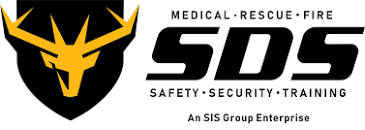This course is for those who are required to enter and work in confined spaces in accordance with issued permits and interpret atmospheric readings.

This course is for those who are required to enter and work in confined spaces in accordance with issued permits and interpret atmospheric readings.
This course provides participants the basic knowledge required to work and operate in confined spaces while adhering to legislative requirements and Australian standards.
Participants will be required to enter and work in confined areas, with entries conducted both horizontally and vertically. Vertical entries will require the candidate to work close to exposed edges and to be in suspension for short periods in a harness.
The theory for gas test atmospheres course is technically involved and requires the candidate to be able to analyse and interpret gas test results for a range of conditions.
Learning Outcomes
The course covers the following:
Legislative requirements, exposure standards and workplace procedures
Identify areas that constitute confined spaces
Access and apply hazard controls
Ensure correct permits and procedures are in place
Work in accordance with an issued permit
Select appropriate tools, equipment and PPE for the task
Correctly enter and work in a confined space
Control and observe the permit site
Prepare and implement rescue/incident response
Atmosphere testing and monitoring, including preparation and maintenance of equipment
Common chemical asphyxiates, irritant, corrosives and flammable gases
Narcotics
Conditions under which atmospheres become hazardous
Units of measurement used to express concentration of atmospheric contaminants
Exiting a confined space and accurately completing the confined space entry permit
Apply and remove tagging and lockout
Entry Requirements
Participants must:
Not suffer from claustrophobia (fear of confined spaces)
Provide photo I.D on entry
Unless exempt, provide a verifiable USI number
Be physically fit and healthy with capacity to perform manual tasks
Be able to read, write, communicate orally, and understand and interpret complex information and situations
Be able to interact with others and work under pressure
Dress appropriately i.e., long sleeve, long pants or overalls, safety boots/closed in shoes, safety glasses
Please ensure you read our Student Handbook for further information on our policies, procedures, terms, and program conditions. If you are unsure if you require learning support, SDS can provide access to a LLN assessment that identifies if any learning support is needed.
Please ensure you inform the training team on registration, if you fail to inform the training team at registration, learning support may not be available on the day of training.
Founded in 2004, Safety Direct Solutions Pty Ltd (SDS) is a Registered Training Organisation (RTO #51632) and a leading provider of industrial safety, fire, rescue and medical training and emergency services personnel in the Australasian region.
Today SDS is owned by SIS Limited, one of Asia – Pacific’s largest security personnel company. SIS provides security, facility management and cash logistics services, which are essential to the functioning of a vibrant and healthy economy and are a trusted leader across these business segments in India and other geographies in the Asia – Pacific region.
SDS has an extensive background and experience in supplying turnkey solutions in Critical Risk Management Teams, Security, Training and Medical Services, across a range of industries, including Energy, Mining, Infrastructure, Government, Defence and Entertainment industries.
The SDS team is comprised of professional emergency response personnel from local, international, military, and civilian backgrounds.
SDS has operations in Western Australia, Northern Territory, Queensland (Cairns), New South Wales and New Zealand. SDS operates a purpose-built Centre of Excellence in Balcatta, Western Australia and Winnellie, Northern Territory.
The Centre of Excellence has a wide variety of portable training equipment that can be used either in the centre or for site-based training. SDS also operates a fleet of emergency response vehicles.
SDS set the benchmark in Australia for excellence in safety training and emergency management. Our people have extensive industry experience, and we train them to an even higher standard, where our clients can depend on them to respond to and effectively manage any emergency situation.
SDS’ approach to projects are to Achieve Excellence and deliver the highest standards of clinical care in the environments in which we operate, through a combination of multinational emergency response personal, local knowledge and an integrated global clinical governance, training and medical supply.
© 2025 coursetakers.com All Rights Reserved. Terms and Conditions of use | Privacy Policy